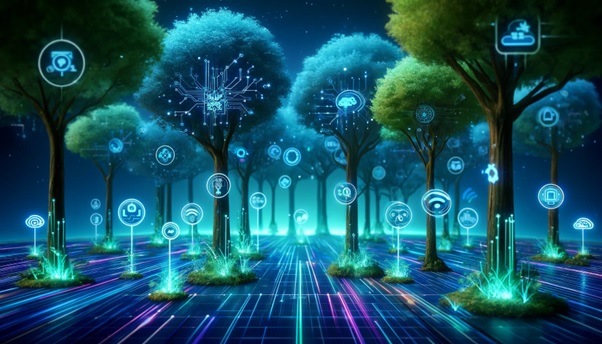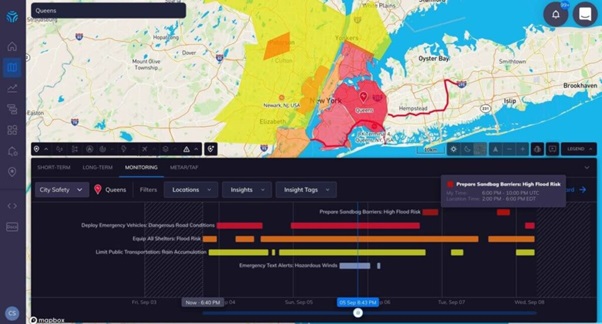Home »
Articles
Real-world applications for Developers in IoT, Web Development, and Data Handling
By Snezhana Szillat Last updated : December 17, 2024
The primary objective of developers today is the creation of new and advanced products in the sphere of IoT, internet services, and data processing. These applications address practical issues, improve people’s lives and ensure organisations perform well in a competitive environment. This article discusses advanced applications, case studies, current statistics, and significant technologies which define these areas.
1. Application for the Internet of Things
IoT provides interconnection of objects or physical devices with the Internet and thus allows real-time exchanging of information. Statista further puts forward that the IoT-connected device market will exceed 29 billion by 2030 to show its enormous market prospect.

a. Smart Home Automation
- Use Case: Developers create apps controlling smart thermostats, lighting, and security systems.
- Tech Stack: MQTT, Node.js, AWS IoT Core.
- Example: Google Nest's ecosystem allows seamless device integration, driven by IoT protocols.
b. Industrial IoT (IIoT)
- Use Case: Maintenance in manufacturing industry helps decrease idle time while increasing productivity.
- Tech Stack: Edge computing, IoT Azure IoT Hub.
- Example: Siemens applies the powers of the IIoT for the prediction of maintenance and improvement of factory performance.
c. Connected Healthcare
- Use Case: Remote patient monitoring through wearables.
- Tech Stack: BLE, REST APIs, Google Cloud IoT.
- Example: Fitbit tracks health metrics, enabling real-time insights.
d. Smart Agriculture
- Use Case: Sensors coupled with IoT work to help control irrigation and check status of the harvests.
- Tech Stack: LoRaWAN, AWS IoT Greengrass.
- Example: Farm tech business use intelligent measuring instruments to improve crop production through fetching data on soil water and climate.
Key Insight: A McKinsey report suggests that IoT Internet of Things could deliver anywhere between $ 3.5 trillion— $12.6 trillion in new economic value by 2030.
2. Web Development Innovations
Web development is still growing, stimulated by new approaches, the modern framework, serverless system, and APIs. We can also reason with Web Technology Surveys which indicate that more than forty percent of websites in the world are built on WordPress, demonstrating the need for flexibility on the web.

a. Progressive Web Apps (PWAs)
- Use Case: Developers build web apps offering native-like experiences.
- Tech Stack: React, Angular, Firebase.
- Example: Starbucks’ PWA enables offline ordering, boosting customer engagement.
b. E-commerce Platforms
- Use Case: Custom e-commerce sites with integrated payment gateways.
- Tech Stack: Shopify APIs, Stripe, Next.js.
- Example: Shopify stores power over 4.5 million businesses globally.
c. Real-Time Data Visualization
- Use Case: Dashboards for monitoring business metrics.
- Tech Stack:js, Chart.js, WebSocket.
- Example: Google Analytics visualizes real-time traffic statistics.
d. Serverless Computing
- Use Case: Connected applications that don’t require server hosting.
- Tech Stack: AWS Lambda, Google Cloud Functions, Azure Functions.
- Example: Serverless architectures process millions of requests giving the ability to scale up as necessary.
Pro Tip: The developers should target basic web metrics like page speed and mobile-friendliness in order to boost up their SEO ranks.
3. Data Handling and Analytics
Decision support systems are vital in making decisions based on the end product of data analysis done by the system. Statista shows that the global data creation is likely to be 181 Zettabytes by 2025, and such a volume calls for decent data management solutions.

a. Data Integration Pipelines
- Use Case: ETL processes for data warehouses.
- Tech Stack: Apache Kafka, AWS Glue, Airflow.
- Example: Netflix processes petabytes of data daily using Apache Kafka.
b. Machine Learning and AI Models
- Use Case: Predictive analytics for customer behavior.
- Tech Stack: TensorFlow, PyTorch, Google BigQuery.
- Example: Amazon’s recommendation engine drives personalized shopping experiences.
c. Real-Time Weather API Integration
- Use Case: Weather-based logistics optimization.
- Tech Stack: REST APIs, Python, Node.js.
- Example: Using a real-time weather API enables weather-aware route planning, reducing delivery delays.
d. Big Data Analytics
- Use Case: Analysis of big data for market intelligence.
Tech Stack: Hadoop, Spark, AWS EMR.
- Example: For stock market predictions financial firms utilize past data of stock exchanges for market trends .
- Best Practice: Protect the privacy of users as well as different regulatory acts, such as GDPR and CCPA, in processing user data .
Conclusion
The tech industry cannot be transformed for better industries by the traditional solutions; thus, developers are critical for IoTs, website development, and data management. Being on top of trends, using technologies that can scale, adopting best practices are all necessary steps towards creating applicable solutions. That is why with a constantly rising bar, the future of software development seems to be infinite.
Recommended Resources
By staying ahead of these trends, developers can drive innovation and create solutions that impact businesses and communities worldwide.
Advertisement
Advertisement